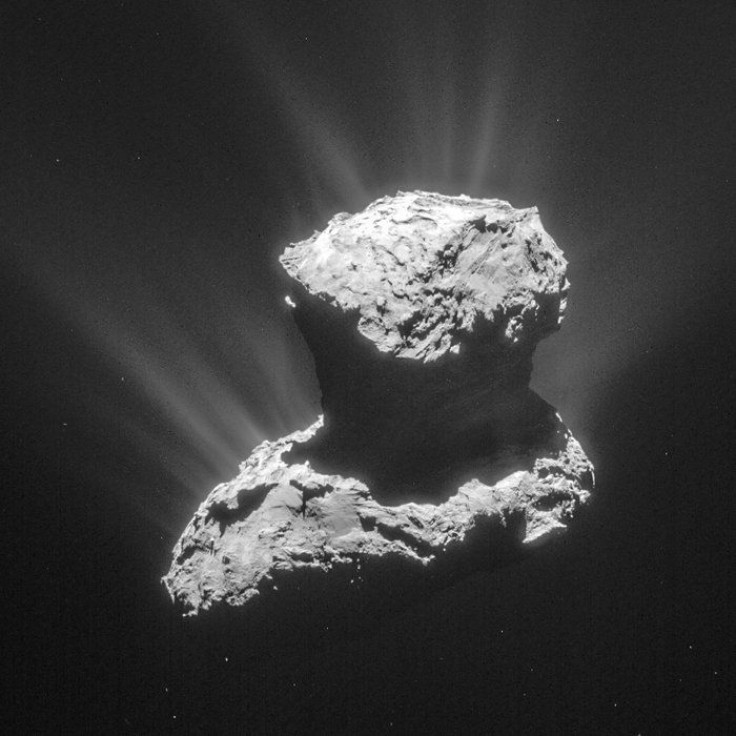Watch: Amazing Rosetta Animation Shows Comet 67P Like Never Before

European Space Agency’s (ESA) Rosetta space probe ended its mission on Comet 67P/Churyumov-Gerasimenko back in September 2016, but the data the orbiter transmitted is still being analyzed and continues to give fresh insight into the distant space object.
We have already seen several images captured by the Rosetta. ESA crash landed the orbiter on the comet’s surface to finish its job, but months before that it beamed a series of images from the surface of the alien comet.
The shots, taken by the probe’s OSIRIS or Optical, Spectroscopic, and Infrared Remote Imaging System, were released publicly last month. Normally, these images look like blurred, raw shots from a distant space object, but Twitter user landru79 created a spectacular animation using them. The short, looped clip not only shows what the surface of a distant comet looks like but also reveals scores of active specks commonly seen during snowstorms on Earth.
#ROSETTA 😍 OSIRIS #67P/CHURYUMOV-GERASIMENKO new albums 😍--ROSETTA EXTENSION 2 MTP030-- Miércoles 1 Junio 2016 all filters stacked pic.twitter.com/Bf173Z5g79
— landru79 (@landru79) April 23, 2018
But, there is the catch. These specks look like snowflakes but actually, it is an illusion created by different aspects — stellar bodies in the background, sun-lit dust blowing on the comet, and possibly streaks from invisible, highly-charged particles hitting the charge-coupled OSIRIS camera, per Gizmodo.
Mark McCaughrean, ESA’s senior advisor for science and exploration, hailed the clip on Twitter and gave more insight into the stars in the background.
“Confirmed. The stars in the background behind Comet #67P are in (constellation) Canis Major: the cluster NGC2362 'falls down' past the limb at top-left; sparse cluster NGC2354 & the star 27CMa are also in the field,” he tweeted.
It is worth noting the stellar bodies appear to be falling down and disappearing behind the cliff because of the rotation of the comet and high-speed of the clip, Live Science reported. The video shows 25 minutes of action in just a few seconds.
Named after its discoverers Klim Churyumov and Svetlana Gerasimenko, Comet 67P is an occasional visitor of the inner solar system, orbiting the sun once every six and a half years. The space-object hosted Rosetta for a period of about two years.
The spacecraft lifted-off in 2004 and chased the comet for about 10 years. Then, it entered the comet’s orbit in August 2014 in order to better understand its atmosphere and surface. For surface studies, it deployed a lander which touched down and bounced off the surface before witnessing power issues due to the lack of sufficient sunlight and getting wedged into a dark crack on the comet.
© Copyright IBTimes 2024. All rights reserved.











